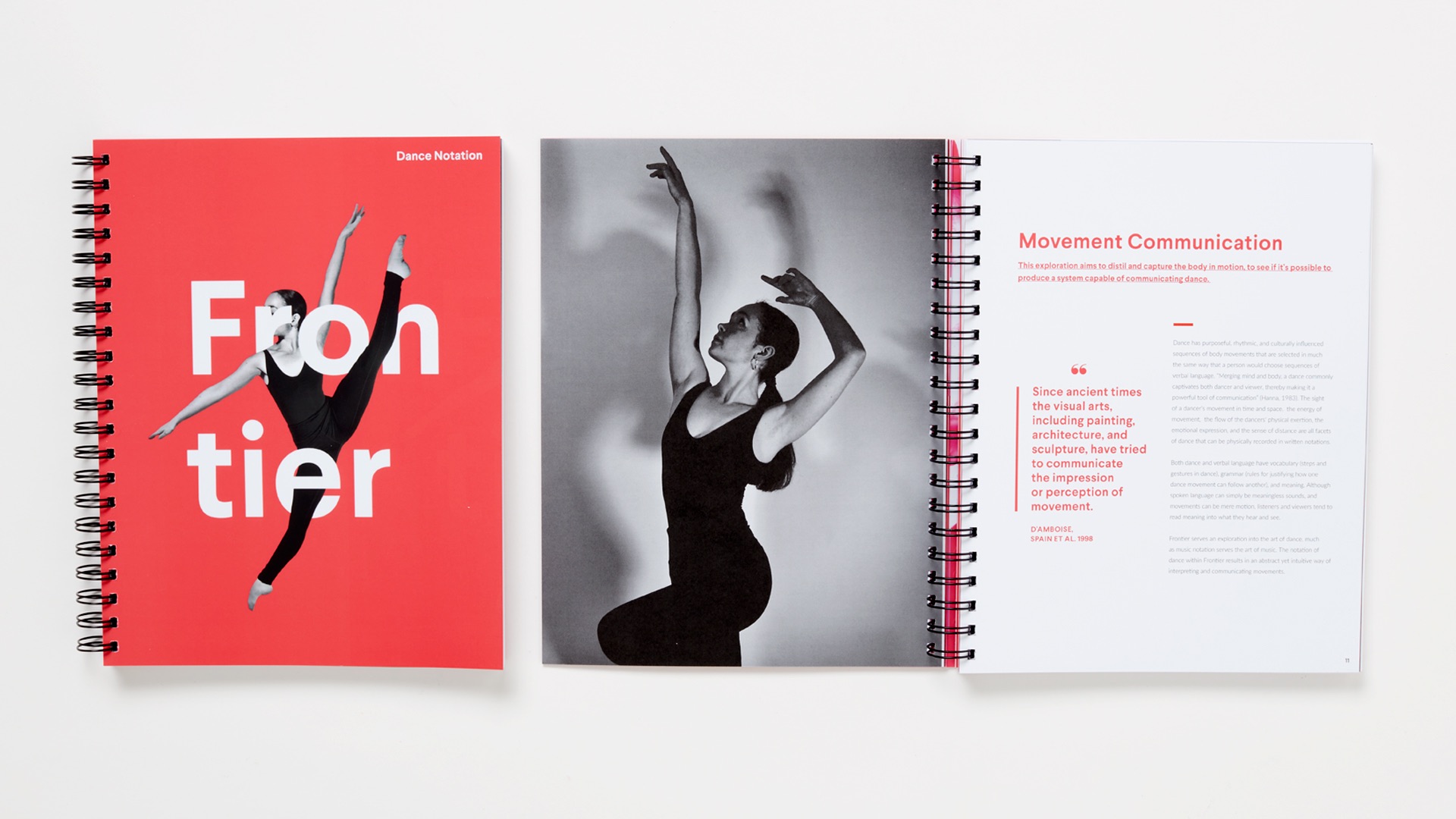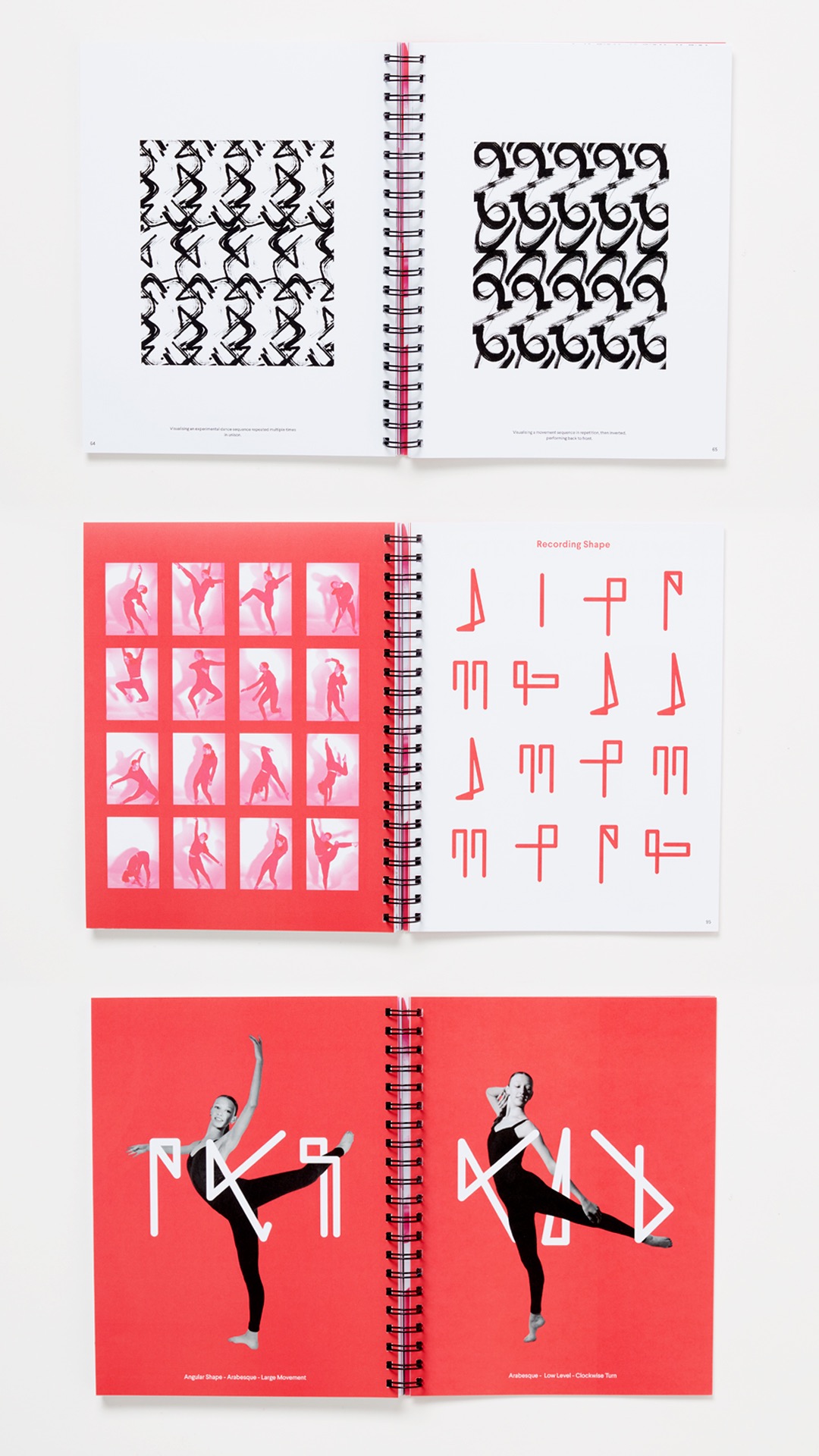
Rina MacDonald
Frontier - Dance Notation
An exploration into the art of documenting dance.
Dance notation is the symbolic representation of the movement in choreography, a coded language to transcribe the human body while dancing. Frontier is an exploration into the art of documenting dance. This is done through the use of gestural, movement inspired mark-making, then translation into symbols.
Frontier aims to distil and capture the body in motion, to see if it’s possible to produce a system capable of communicating dance through a graphic translation. A movement alphabet is created and codified which acts as a starting point for re-inventing the dance notation system. This project brings awareness to the lack of choreography preservation for dancers in my generation; much like music is notated, dance should be also.
Dance notation is the characterised representation of the movement in choreography. The dance notation process creates a language involving a movement alphabet to translate the actions of the human body onto paper. The lack of research and knowledge in this area for dancers in my generation and generations to come is problematic for the preservation of dance choreography. This motivated me to start an investigation into ways dance can be documented and preserved through written language.
Capturing the art of motion addresses the urgent need in the dance field for documenting and preserving cultural expression. The Frontier exploration includes a look into the dance specific considerations for documentation and the expressive nature in which both dance and art have. The documentation is specifically geared towards capturing the detailed intent of technical dance steps, stage grids/floor patterns, synchronisation, geometrical movements and patterns. Along with these choreographic devices, Frontier also explores the art in the documentation of dance elements such as energy, flow, and expression.
Dance has purposeful, rhythmic, and culturally influenced sequences of body movements that are selected in much the same way that a person would choose sequences of verbal language. The sight of a dancer’s movement in time and space, the energy of movement, the flow of the dancers' physical exertion, the emotional expression, and the sense of distance are all facets of dance that can be physically recorded in written notations.
My relationship with the world of dance stems from personal experience, I have been a competitive dancer for 15 years and completed my honours diploma in highland dancing. Through my many years of dance study, one of my main realisations was the absence of documentation around my art form, much as music has musical notes I often wondered how dance could be documented on paper. This realisation leads to the exploration into the Frontier dance notation system, to try and uncover this issue within my generation of dancers.
A comparison with music makes the point for notation clear. Although music is recorded for preservation and enjoyment, the notation alongside is still always present and necessary. The study of music involves recordings as well as a written music sheet for evaluation and educational purposes. Much as dance should be - dancers should preserve written notations of choreography for later study and understanding of performance. The pure concept of the work behind a dance is best recorded in notation.
Frontier serves an exploration into the art of dance, much as music notation serves the art of music. The notation of dance within Frontier results in an abstract yet intuitive way of interpreting and communicating movements.




